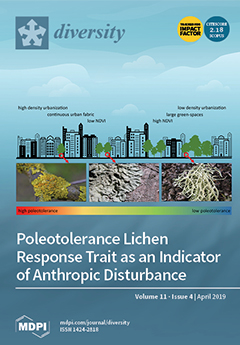Genetic diversity and its distribution, both within and between populations, may be determined by micro-evolutionary processes, such as the demographic history of populations, natural selection, and gene flow. In plants, indices of genetic diversity (e.g.,
k,
h and
π) and structure
[...] Read more.
Genetic diversity and its distribution, both within and between populations, may be determined by micro-evolutionary processes, such as the demographic history of populations, natural selection, and gene flow. In plants, indices of genetic diversity (e.g.,
k,
h and
π) and structure (e.g., F
ST) are typically inferred from sequences of chloroplast markers. Given the recent advances and popularization of molecular techniques for research in population genetics, phylogenetics, phylogeography, and ecology, we adopted a scientometric approach to compile evidence on the recent trends in the use of cpDNA sequences as markers for the analysis of genetic diversity in botanical studies, over the years. We also used phylogenetic modeling to assess the relative contribution of relatedness or ecological and reproductive characters to the genetic diversity of plants. We postulated that genetic diversity could be defined not only by microevolutionary factors and life history traits, but also by relatedness, so that species more closely related phylogenetically would have similar genetic diversities. We found a clear tendency for an increase in the number of studies over time, confirming the hypothesis that the advances in the area of molecular genetics have supported the accumulation of data on the genetic diversity of plants. However, we found that the vast majority of these data have been produced by Chinese authors, and refer specifically to populations of Chinese plants. Most of the data on genetic diversity have been obtained for species in the International Union for Conservation of Nature (IUCN) category NE (Not Evaluated), which indicates a relative lack of attention on threatened species. In general, we observed very high F
ST values in the groups analyzed and, as we focused primarily on species that have not been evaluated by the IUCN, the number of plant species that are threatened with extinction may be much greater than that indicated by the listing of this organization. We also found that the number of haplotypes (
k) was influenced by the type of geographic distribution of the plant, while haplotype diversity (
h) was affected by the type of flower, and the fixation index (F
ST), by the type of habitat. The plant species most closely-related phylogenetically have similar levels of genetic diversity. Overall, then, it will important to consider phylogenetic dependence in future studies that evaluate the effects of life-history traits on plant genetic diversity.
Full article





